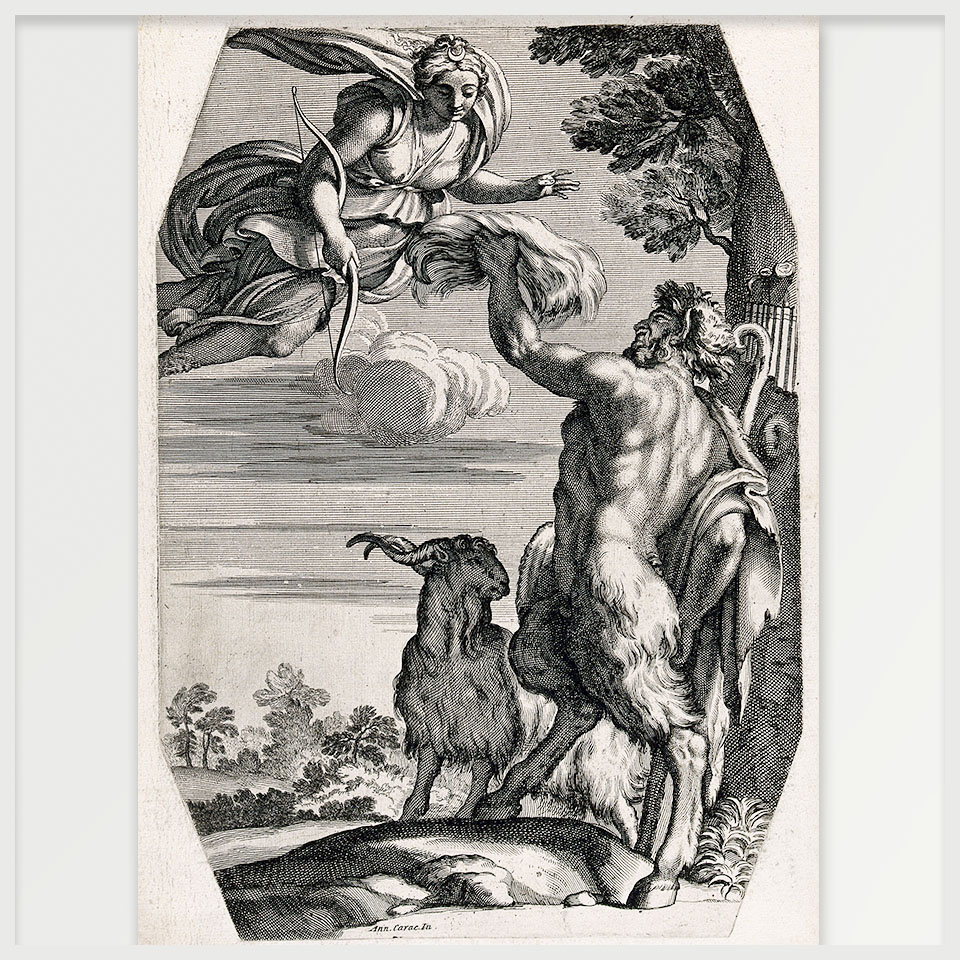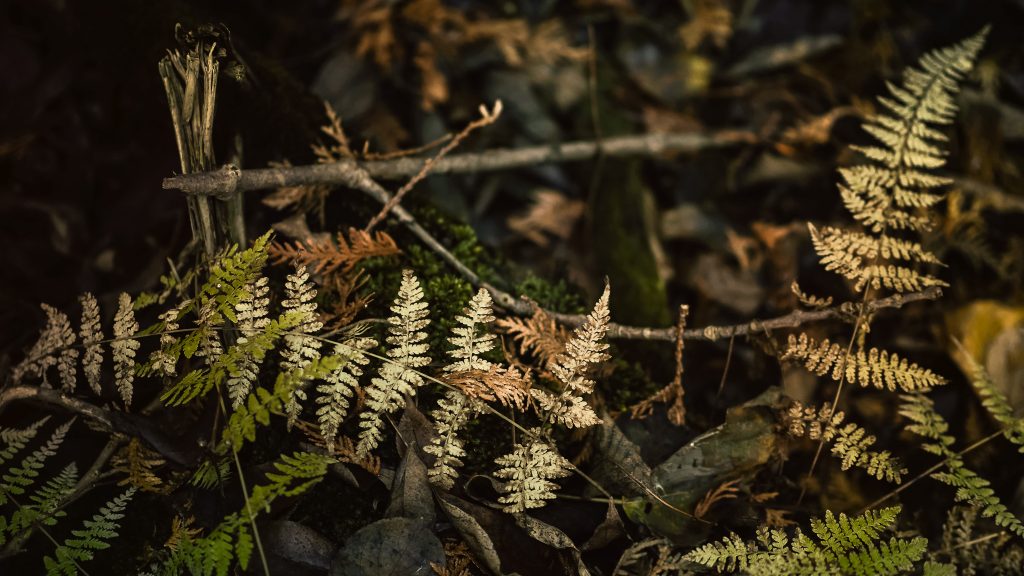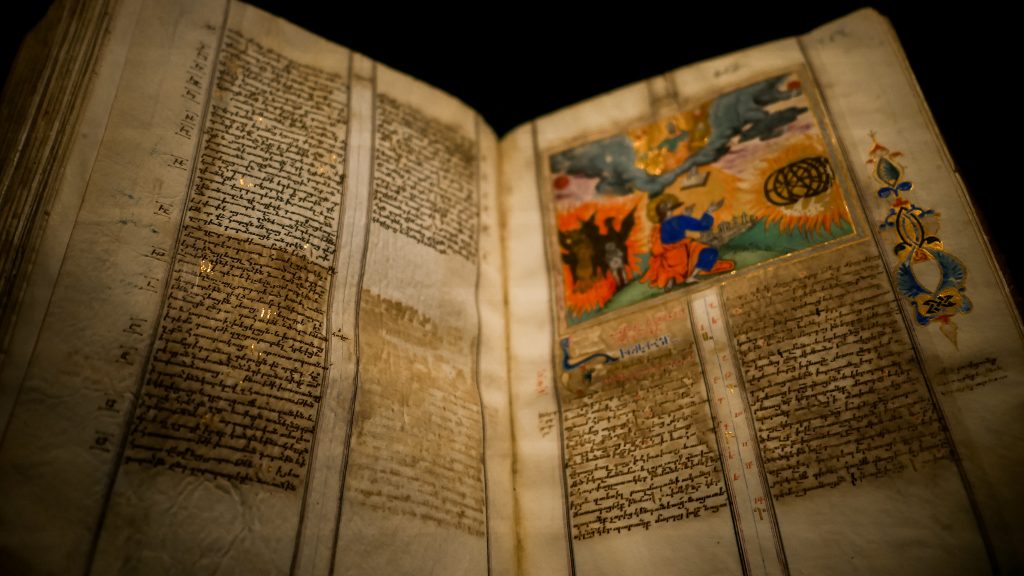Magic, Healing & Ritual: Herbal Tradition in the Italian Renaissance
Angels, Demons, Herbs and Magic
The ancient, and now largely lost and forgotten, tradition of illuminated herbal manuscripts can tell us much about the practice of herbal medicine throughout antiquity. It was not uncommon for such manuscripts to contain drawings of angels and demons, mythological figures and beings of the celestial hierarchies. Witchcraft and magic were taken to be very serious matters, not only when it came to cultural and religious belief systems, but also when considering the proper training of a physician. As one author writing on traditional Italian healing systems in antiquity has commented:
“Physicians were educated with the notion that drugs had occult powers to affect the body in special ways. It was common belief that demons invaded the soul, and that certain herbs had the property of chasing away devils and demons” (Silberman: 1996).
Expert Italian Renaissance physicians were required to be competent in astronomy and astrology “since the position of the celestial bodies contributed to the occult qualities of a medicinal herb” (Silberman: 1996). The Renaissance, as reflected in the writings of prominent philosophers of the time such as Giordano Bruno and Marsilio Ficino, saw a resurgence of pagan sensibilities. Renaissance thought and imagination embraced an animistic worldview that threatened the established, conservative branches of Christianity and their associated medieval superstitions. As the archetypal psychologist James Hillman writes:
“Renaissance animism led to pluralism, which threatened Christian universal harmony. For when inner soul and outer world reflect each other as enlivened souls and substances, and when the images of these souls and substances are pagan, then the familiar figures of Christianity diminish to only one relative set among many alternatives.”
This co-reflection or mirroring of the inner soul and the outer world are the life-stream of the ancient pagan and Renaissance herbal medical traditions of Italy and surrounding regions. This conception of a pluralistic world and of the enlivened human soul seen as a microcosmic reflection of the greater soul of nature helps us to understand the associations and correspondences that were made between particular herbs, supernatural, celestial, and divine beings, and the actions of the planetary bodies in the medicine of the time.
Medicina Antiqua Illustration depicting mandrake harvesting
Christianity and Paganism
In the Middle Ages there was much scorn for the Pagan worship of Goddess nature (who is synonymous with Venus or Aphrodite). This too is reflected in the medical manuscripts of the day. Consider, for example, the “editing” or erasure of an invocation to Gaia found in an early 13th century Viennese manuscript, Medicina Antiqua, by an unknown monk living sometime later in the Medieval period. The erasure in question was found on the back of an image depicting the invocation of the divine mother.
“She stands in classical clothing on the banks of a river in which the river god Neptune can be seen sitting with his trident on a snake. Mother Earth holds a cornucopia in her arms and is surrounded by stylized palms and fantasy plants.” (Müller-Ebeling: 2003, 184).
The fifty-one line invocation on the back of the image originally began “Sacred Goddess Earth, bringer of natural things…” but was changed to “To the Sacred God…” by the monk in question. In the 15th century, much of Northern Europe “fought hard for a reformation of the religious and moral foundations of spiritual life” but in sunny Renaissance Italy there was to be found an opening and renewal of the senses, a “rediscovery of classical sculptures of the gods as well as to texts that were bought from the cloisters by…Cosimo de’Medici” (Müller-Ebeling: 2003, 180).
Italian philosophers and artists of the time were concerned with understanding and exploring nature’s beauty and “the congenial side of the human character [was given much greater attention than was] the sinful” (ibid). A comparison of Germanic and Italian art of this period can be quite revealing; the former tradition is full of images of infernal hells (e.g. Hieronymus Bosch), the latter dedicated to an exploration of anatomy and perspective rooted in a renewed pagan grace (e.g. Leonardo, Raphael, Michelangelo). For confirmation of this claim, one can for example study the encoded pagan symbolism present in Michelangelo’s anatomical drawings.
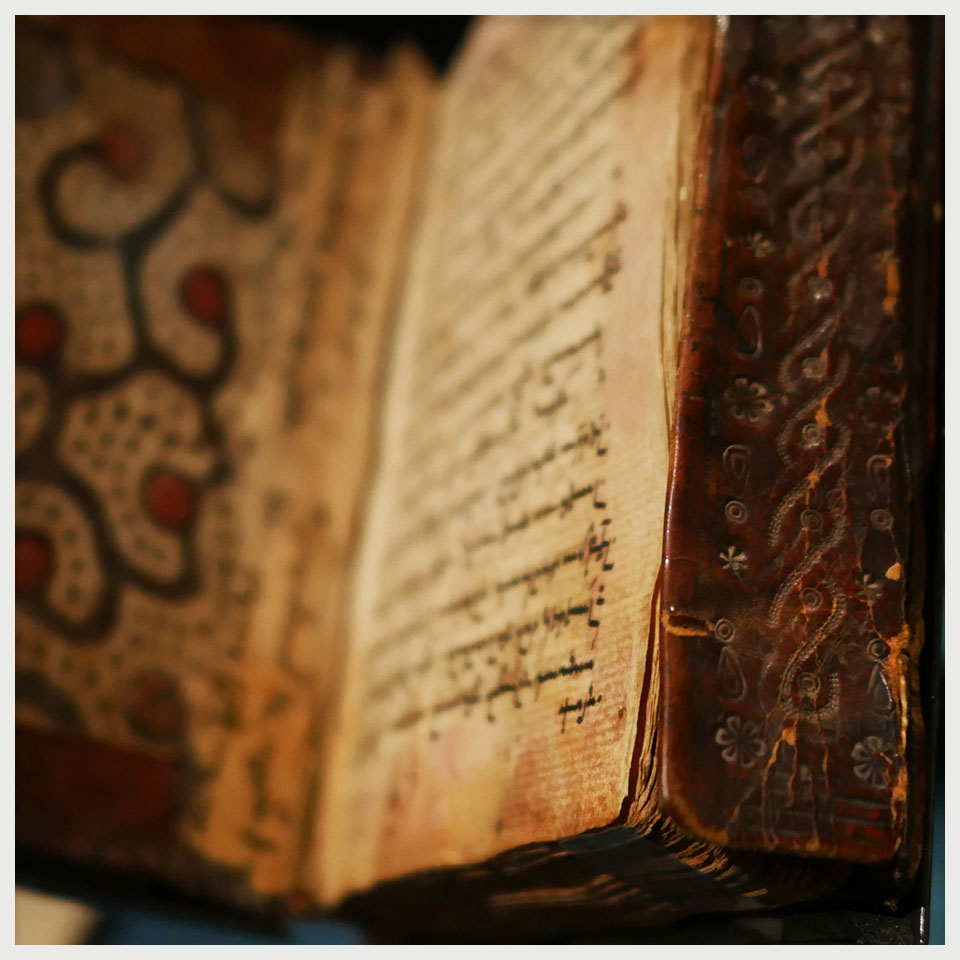
Pictured: 17th Century Bible
Given the church’s disdain for nature worship and resurgent pagan sensibilities, it is no wonder that Giordano Bruno, the Renaissance magi who considered medicine to be a branch of natural magic, was eventually burned at the stake for heresy (in particular, he was put to death for his belief in an infinite number of worlds). In his treatise De Magia Bruno provides a list of ten definitions of the words magic and magician. The one that especially interests us reads as follows: “Magician: someone who does wondrous things merely by manipulating active and passive powers, as occurs in chemistry, medicine and such fields; this is commonly called ‘natural magic’” (Bruno: 1998). For Bruno, the natural world and the divine world reflected and interpenetrated each other. To use and to understand herbs was to know, in the sense of gnosis, the action of divinity in nature; it was also to realize that through the work of learning to read the book of nature that one in turn serves to illuminate the divine:
“… for as the divinity descends in a certain manner inasmuch as it communicates itself to nature, so there is an ascent made to the divinity by nature, and so through the light which shines in natural things one mounts upward to the life which presides over them” (Bruno quoted in Yates: 1940, 183).
Bruno also gives us an insight into the common practice of using incantations and physical traces left behind by or belonging to a person to affect a cure or to set a curse in motion:
“Wicked or poisonous magic: incantations are associated with a person’s physical parts in any sense; garments, excrement, remnants, footprints and anything which is believed to have made some contact with the person. In that case, and if they are used to untie, fasten, or weaken, then this constitutes the type of magic called ‘wicked’, if it leads to evil. If it leads to good, it is to be counted among the medicines belonging to a certain method and type of medical practice. If it leads to final destruction and death, then it is called ‘poisonous magic’ (Bruno: 1998).”
Hellebore and Mandrake
Not all figures of the Italian renaissance shared the magical and animistic views of Bruno, and the more “rational” voices of the time thought that Bruno and his ilk were quite mad. But even among the more conservative authors, herbal medicine was still widely referenced and bound up with mythological associations. The famous poet Torquato Tasso took issue with Bruno’s worldview and in discussing his work quoted Erasmus’ phrase “Anticyram navigat”, literally ‘set sail for Anticyra’. Anticyra was a place that was known to contain an abundance of the herb hellebore (Veratrum album), then used as a cure for madness (Yates: 1940, 191)). Let us turn to consider this herb, and the related mandrake (Mandragora officinarum), both of which can serve to give us some insights into the practices and belief systems that existed in the Italian herbal tradition, especially the tradition maintained by the rhizotomes, or root diggers, the magician-herbalists of the ancient world.
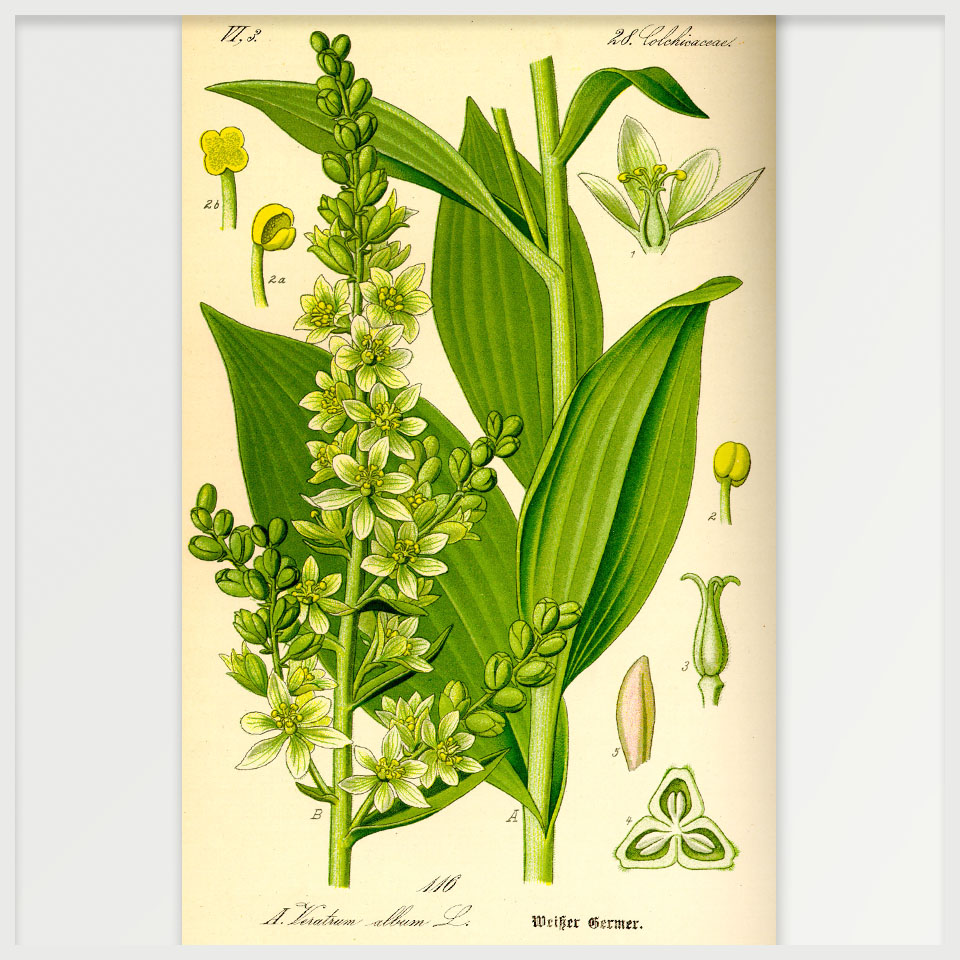
Hellebore (Veratrum album, white hellebore, veratro bianco in Italian); Helleborus niger, black hellebore) was a very important herb not only in ancient and renaissance Italy but also in Greece, France, and Egypt, among other places. Theophrastus maintained that the two types of hellebore were the most important medicinal plants that were used in ancient Greece and Rome. Contemporary ethnobotanist Christian Rätsch says of the hellebores: “they were the central medicines of the rhizotomes, diggers who nourished the magical plants with shamanic rituals. Hellebore was a sacred plant of the gods” (Rätsch: 2005, 525). Rätsch speculates that name helleboros is derived from hella-bora, which means “food of Helle.” The Hellespont is named after Helle who fell into this body of water after narrowly escaping death. Helle’s stepmother Ino resentfully roasted all of the seeds in the region of Boeotia so that a massive famine would result; this famine she blamed on Helle and her brother Phrixus, the stepchildren she so hated, in a ploy to have them killed. However, a flying golden ram sent by their birth mother Nephele saved these two. Helle fell from the ram into the Hellespont, where she was saved by Poseidon and metamorphosed into a goddess of the sea (in some less interesting accounts of the myth Helle simply drowned).
Rätsch argues that the most important documented use of this herb involved turning the root into a snuff. This is because “the artificially induced sneezing (the German name nieswurz means “sneezing root”) was believed to cause the demons of sickness to leave the body” (ibid). The Greeks and the Romans used the white hellebore1, which was ritually harvested in a way similar to the mandrake (Mandragora officinarum). Pliny gives a detailed account of the uses of white hellebore, which also gives us insight into the nature of medical treatment in the Rome of his time:
The body must be prepared beforehand for seven days by spiced food and abstention from wine, on the fourth and third day through vomiting, on the day preceding through fasting. White hellebore is also given in something sweet but is best in lentils or in a mush… The emptying begins after about four hours; the entire treatment is over in seven hours. In this manner, white hellebore heals epilepsy, …dizziness, melancholy, insanity, possession, white elephantiasis, leprosy, tetanus, tremors, foot gout, dropsy, incipient tympanic water, stomach weakness, charley horse, hip pains, four-day fever, if this will not disappear in any other way, persistent coughing, flatulence, and recurrent stomachaches (Pliny quoted in Rätsch: 2005, 527).
Consideration of the harvesting rituals common to hellebore and mandrake can give us interesting insights into the practices and beliefs of the rhizotomes as they engaged their art in Greek and Italian herbal traditions. The harvesting of these two plants involved many preliminaries and precautions. “Naturally a weird story of perils incurred in obtaining a plant strengthened belief in its magic powers and added to its commercial value” (Randolph, 489). Theophrastus describes the practices of the root diggers in his History of Plants, with specific reference to the mandrake: “Around the mandragora one must make three circles with a sword, and dig looking toward the west. Another person must dance about in a circle and pronounce a great many aphrodisiac formulas” (Theophrastus quoted in Randolph: 1905, 489). He also mentions the necessity of standing with one’s back to the wind so as not to be exposed to strong odours that some plants may emit, and anointing any skin not covered by clothing as a means of protection and defense. Other practices involved the “digging of certain plants only by night, [and] avoiding the sight of certain birds” (Randolph: 1905, 489). There were variations on these practices that depended on the plant being harvested and the uses for which it was intended. While the mandrake was to be dug up with one’s back facing west, hellebore was to be dug with one’s back facing east. Theophrastus notes that the practice of repeating aphrodisiac formulas as part of the harvesting of mandragora shows great similarities to the practice of repeating curses when sowing cumin seeds (Randolph: 1905, 490).
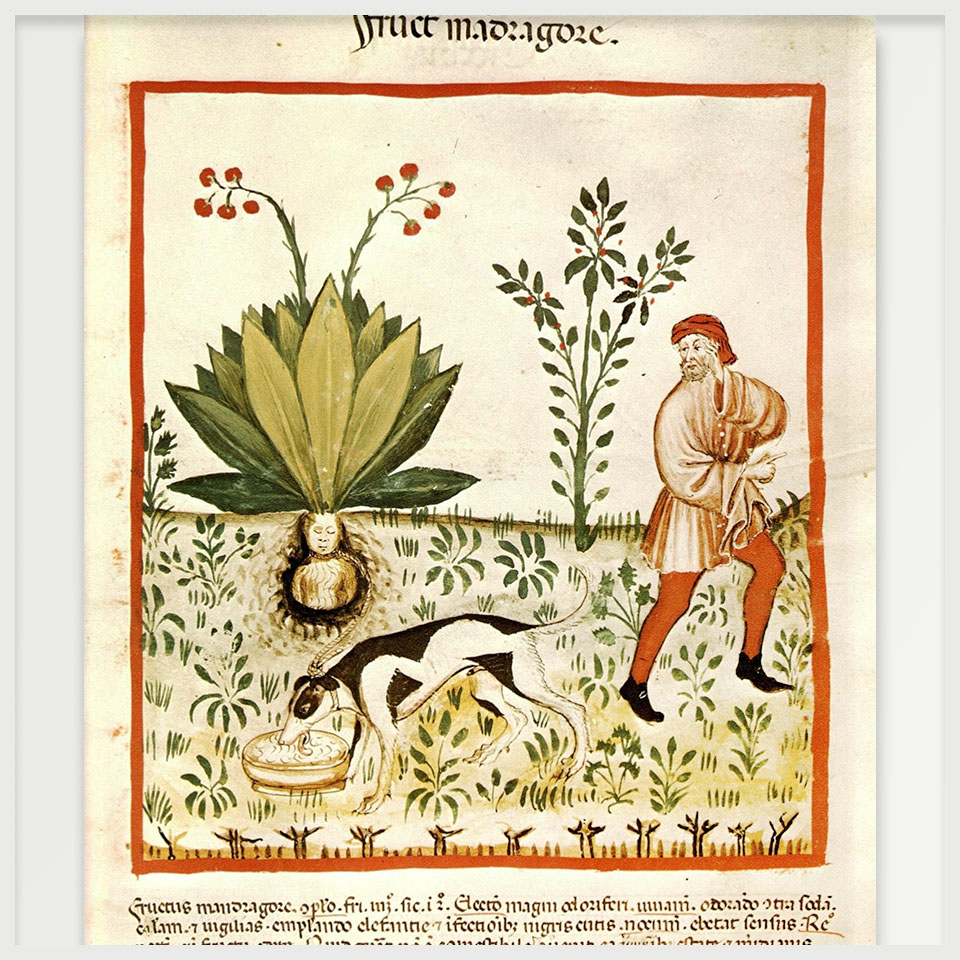
Mandrake Harvesting Illustrated in the Tacuinum Sanitatis manuscript, 1390
Pliny borrowed a great deal from Theophrastus and the account found in his Natural History of the practices of the root diggers and the harvesting of the mandrake in particular is one indication of this: “Those who are about to dig mandragora avoid a wind blowing in their faces; first they make three circles with a sword, and then dig looking toward the west” (Pliny quoted in Randolph: 1905, 490). We can notice however that Pliny says nothing of the “great many aphrodisiac formulas” that Theophrastus mentions in his account of the practices of the rhizotomes. Randolph suggests that “the omission by Pliny of any reference to aphrodisiac formulas is easily explained by his declaration that he will say nothing in his work about aphrodisiacs or magic spells except what may be necessary to refute belief in their efficacy” (Randolph: 1905, 490). This stance again speaks to the differences that existed in the ancient world between those who subscribed to the views and practices of natural magic and those who saw such a worldview as a breed of madness that must be rejected and defeated.
Aphrodisiacs were highly valued in Mediterranean herbal traditions, and one of the greatest of all of the aphrodisiacs was the mandrake. Rätsch comments that “in ancient times, the primary ritual significance of the mandrake was in erotic cults” (Rätsch: 2005, 348). However, only poor quality source material describing this usage remains and so detailed information about these practices is not available to us. Apart from its uses as an aphrodisiac, the mandrake was also widely used in medicine. Dioscorides:
A juice is prepared from the cortex of the bark by crushing this while fresh and pressing this; it must then be placed in the sun and stored in an earthen vessel after it has thickened. The juice of the apples is prepared in a similar manner, but this yields a less potent juice. The cortex of the root that is pulled off all the way around is put on a string and hung up to store. Some boil the roots with wine until only a third part remains, clarify this and then put it away, so that they may use a cup of this for sleeplessness and immoderate pain, and also to induce lack of sensation in those who need to be cut or burned themselves. The juice, drunk in a weight of two obols with honey mead, brings up the mucus and the black bile like hellebore; the consumption of more will take life away (Dioscorides quoted in Rätsch: 2005, 348).
The root diggers would only dig up the mandrake on the “day of Venus”, Venus of course being the Goddess of Love, which further suggests that one of the greatest virtues attributed to the mandrake in the ancient world was as an aphrodisiac, an agent in love magic/erotic rites (Randolph: 1905, 494). The mandrake is well known for its anthropomorphic appearance, and it is common in herbal traditions from around the world to attribute special healing powers to plants that resemble the human form (one can also think of the enormous sums that are paid in China even today for ginseng roots which look like human beings). Dioscorides and Pliny both make reference to a “male” and a “female” species of the mandrake but as Randolph clarifies “these terms, which the ancients applied to many plants, have nothing to do with sex, but signify more robust species (i.e., those having larger leaves, roots, etc., and attaining a greater height) and their opposites” (ibid).
The Goddess Circe
As we can see, herbal medicine in ancient and renaissance Italy, and throughout the Mediterranean region as a whole, was indissociably bound up with the workings of the gods and nature spirits. The Goddess Circe possessed a tremendous knowledge of herbs and, in particular, was regarded as a master of poisons (pharmaka). Her most famous plant was called Moly. To this plant were attributed psychoactive and aphrodisiac properties. Dioscorides referred to the mandrake as circeon, Mandragora Circaea being the herb that Circe used to transform Odysseus’ boat crew into “pigs.” (Müller-Ebeling et al. interpret this scene not in a literal sense but as an erotic transformation. The authors quote Apollonius: on the island of Circe “beasts, not resembling the beasts of the wild, nor yet like men in body, but with a medley of limbs went in a throng…such creatures, compacted of various limbs, did earth herself produce from the primeval slime…in such wise these monsters shapeless of form followed Circe” (Apollonius quoted in Müller-Ebeling: 2003, 117)). 19th and 20th century interpreters of the ancient literature (such as Dierbach and Kreuter) also take the Moly of Circe to be the mandrake. Theophrastus claimed that Circe lived in Lazio, a region in west-central Italy, where “the special medicinal herbs” were produced (Theophrastus quoted in Müller-Ebeling: 2003, 116). The sacred mountain of Circe, Monte Cicero, can still be visited today, on the Italian coast above Sicily. The early poet Aeschylus, according to Pliny, “declared that Italy abounds with potent herbs, and may have said the same of Circeii where she [i.e. Circe] lived. Strong confirmatory evidence exists even today in the fact that the Marsi, a tribe descended from Circe’s sons, are well-known snake-charmers” (Pliny quoted in Müller-Ebeling: 2003, 116).
Circe, goddess of death and guide of souls, was worshipped in groves. Apollonius notes that Circe’s groves, where executions were carried out, were lined with willows (Salix alba) and osiers/tamarisks (Tamarix spp.). Tamarisks and willows are well known medicinal trees. “The willow, or, more precisely, the white willow, was used for birth control; thus it was a typical witches’ plant” (Müller-Ebeling, 117). Two other plants sacred to Circe are the alder (most probably Alnus glutinosa) and juniper (Juniperus communis or Odorata cedrus, as it is recorded in Virgil’s Aeneid). Concerning the alder tree, it was said to surround Circe’s island (Aeaea or Eëa), located just south of Rome. Müller-Ebeling et al. comment:
“We can assume that there had been an archaic alder cult that by the Hellenic times had already been suppressed. Alders were considered transformed sisters of Phaeton, the son of Helios and brother of Circe” (Müller-Ebeling: 2003, 117). Juniper was Circe’s sacred incense and “therewith it is in the vicinity of archaic shamanism. Juniper is one of the oldest incense materials of the Eurasian shamans” (ibid).
Let us conclude our discussion of Circe by noting that though she has been described as compassionless and called the mother of darkness and horror, this noble sorceress was originally worshiped as a healing Goddess. As Giordano Bruno writes:
Ah, if only it pleased the sky, that for us today, like once long ago in happier centuries, this ever magical Circe would appear, who would be able to put an end to things with plants, minerals, poisons, and the magic of nature. I am certain, that despite her pride she was merciful with regards to our misery (Bruno: 1998).
Diana (Artemis) and Pan. Engraving after Annibale Carracci
What We Can Learn From This Symbiosis
To conclude, let us illustrate with another example just how bound up the practices of the healing arts were with the pagan pantheon of Gods and Goddesses – and consider how we can still learn from these sources of inspiration from the mythological imagination of the Renaissance. Consider Artemis/Diana, a woodland Goddess who served as the archetypal herbal healer throughout antiquity. She has very close ties to the animals of the forest, and oversees the wild hunt. Artemis is the goddess of the moon, the fierce protectress of the wild and of all of the life which courses through it, and it is she who governs the cycles of fertility and birth. Artemis’ garden is wild nature. Her role as a great shamanic healer is further brought to light through her representation as the “great she-bear, Ursa major, ruler of the stars and protector of the axis mundi (pole of the world) marked by the pole star at the centre of the constellation of Ursa Major” (Brooke: 1992). Artemis is closely associated with the artemisia plants, such as mugwort and wormwood (plants that help to enhance the clarity of consciousness, promote emotional resilience, and foster a refined sensitivity to and deepened awareness of our place in the world and our interactions with human and other-than-human nature). As explained in the Medicina Antiqua:
“There are three types of Artemisia. All three and their healing effects were discovered by the Goddess Diana. She transmitted this medicine chest to the centaur Chiron, who was the first to transform it into medicine. This is why these plants carry the name of Diana, or rather Artemisia” (Medicina Antiqua 13, fol. 32r).
When we read this and related sentiments, it becomes clear that without Artemis the tradition and practices of the Renaissance magi-herbalists would be inconceivable.
Healing was, in the Renaissance traditions here under discussions, associated with the qualities of grace and beauty. Artemis/Diana was said to be exceptionally beautiful, her beauty being comparable even to that of Aphrodite. Psychologist Ginette Paris suggests that Artemis sanctifies “solitude, natural and primitive living to which we may all return whenever we find it necessary to belong only to ourselves” (Paris: 1986, 124). In her capacity as a huntress and archer, she can bestow upon us the wild, atavistic power that can be utilized to resist the forces of domestication and domination. Artemis is the great protectress of flora and fauna, and thus she has a special bearing on the ecological issues that face living beings on the Earth today. It would be wise to look to her when making choices that will affect the future of the natural world.
“There are obviously many ways of entering into therapeutic contact with nature, but solitude and identification with nature through falling water, trees, or animals are cues that our contact is with Artemis rather than Dionysus, Demeter, or Aphrodite” (ibid, 127). The waters of the mountains and streams are also under the care of Diana, and if we are to re-enliven our sacred relationship to this elemental force then “perhaps, afterward, the nymphs, naiads, and nereids would return to inhabit our imagination and teach us the necessary respect for the waters of Artemis” (ibid). Let us not forget the mythological traditions of healing and the great bearing they can have on contemporary consciousness, let us take heed not to neglect the great Pagan wisdom of the wild imagination.
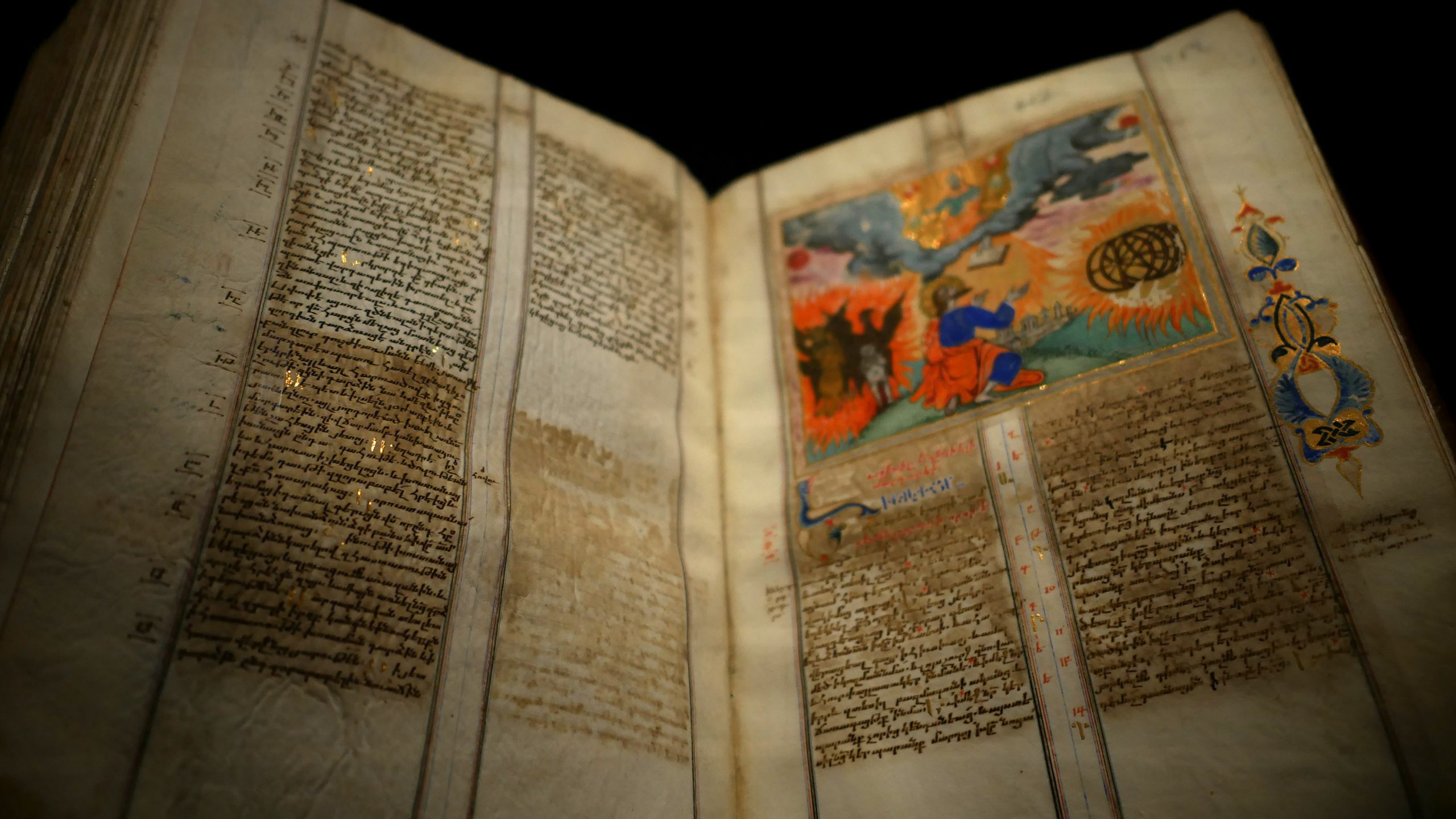
Bible page depicting the prophet Ezekiel’s Vision, 1648
Footnotes:
1 Daniel Schulke claims that black hellebore is “a poison of decided infamy; all parts of the plant render up potent venoms” (Schulke: 2017, 132). An extract of the rhizome was used in antiquity and into the medieval era as a “utensil of murder, most notably by King Attalus III of Pergamos” (ibid). Black hellebore contains the glycosides heleborin and hellebrin, which are chemically related to telo-cinobufagin (venom found in some species of toad skin). These glycosides slow the heart rate and affect cardiac muscle in a similar way to foxglove. The Key of Solomon the King contains a recipe for an incense to be used as part of a “spell for vivifying a talisman with the genius of Saturn” containing the stalks of black hellebore along with alum, assafoetida, scammony, sulphur, and cyprus ash (ibid).
Works Cited:
- Brooke, Elisabeth. A Woman’s Book of Herbs. London: Aeon Books, 1992.
- Bruno, Giordano. Cause, Principle and Unity: And Essays on Magic. Cambridge: Cambridge University Press, 1998.
- Hillman, James. Re-Visioning Psychology. New York: Harper, 1976.
- Müller-Ebeling, Claudia, Rätsch, Christian, and Storl, Wolf. Witchcraft Medicine: Healing Arts, Shamanic Practices, and Forbidden Plants. Vermont: Inner Traditions, 2003.
- Paris, Ginette. Pagan Meditations. Connecticut: Spring Publications, 1986.
- Randolph, Charles Brewster. ‘The Mandragora of the Ancients in Folk-Lore and Medicine.’ Proceedings of the American Academy of Arts and Sciences, Vol. 40, No. 12 (Jan., 1905), pp. 487-537.
- Rätsch, Christian. The Encyclopedia of Psychoactive Plants. Maine: Park Street Press, 2005.
- Schulke, Daniel. Veneficium: Magic, Witchcraft, and the Poison Path. San Francisco: Three Hands Press, 2017.
- Silberman, Henri. ‘Superstition and Medical Knowledge in an Italian Herbal.’ Pharmacy in History, Vol. 38, No. 2 (1996), pp. 87-94
- Yates, Frances. ‘The Religious Policy of Giordano Bruno.’ Journal of the Warburg and Courtauld Institutes, Vol. 3, No. 3/4 (Apr. – Jul., 1940), pp. 181-207.
Illustrations/Images:
- Medicina Antiqua Illustration
- 17th Century Bible: (photo provided by Serena Mor)
- Veratrum album Illustration
- Mandrake Harvesting
- Diana (Artemis) and Pan
- Prophet Ezekiel’s Vision: (photo provided by Serena Mor)
From Biophilia to Biophobia
The Love and Distrust of Herbal Medicine
The process of modernization can be described as the transformation of biophilia (the love of and communion with nature) into biophobia (the fear and distrust of nature). Industrialization and the commoditization of everyday life are only some of the more recent forces that cemented this change, which in reality reaches much further back into Ancient Greece and Rome, as can be see in the hegemonic Christianization of Pagan culture, or the decline of Greco-Roman polytheism.
The transformation from biophilia into biophobia should be of interest and concern for herbalists and practitioners of natural medicine generally, as it is the underpinning of the ideological foundation of the ideas that many today harbor towards non-pharmaceutical based healing traditions and practices. These contemporary attitudes which espouse, for example, the notion that plant based healing is dangerous, untrustworthy, ineffective, unscientific, etc., are part of a much larger fear of the wild that stems from a generations long process of alienation from nature. Herbalist and ethnobotanist Wolf-Dieter Storl discusses how the forest, once held to be a magical and paradisiacal realm of great mystery and grace, gradually became a place of fear and trepidation. Wild plants that once provided sustenance in the form of food and medicine to one’s ancestors came to be regarded as potential poisons that should not even be touched, let alone ingested. This distrust and abhorrence of nature is the essence of biophobia. Biophobia is a treacherous trap for the body, mind, soul and spirit that has been laid down alongside and in lock step with the deployment of the global machinery of industrial society and the shifts in human perception and spiritual life that lead to it.
Speaking to the legacy of biophobia in the Western world, Dieter Storl writes:
“Western people are scared of rabid foxes, and they are afraid to eat wild raspberries or blueberries – after all, they might be contaminated with fox tapeworm eggs. And there are ticks, which can cause Lyme disease and encephalitis if they bite you. The best solution is never to go into the forest! (Or you can do what many do when they go hiking, and march through the forest as if through enemy territory). When considered soberly, however, the fear of the forest reveals itself to be mere hysteria. The likelihood of catching rabies or tapeworm in the woods is less than the chance of being hit by a truck. The fear of the forest is the fear of one’s own soul, of the “evil witch,” of the shadows of one’s own personality.1”
The fear of the soul is often tied up with the repression of bodily feeling and somatization (any unconscious and nonvolitional process where physical symptoms are produced as a consequence of one’s ill-founded psycho-emotional attitudes and disposition). It is through the soul that we are capable of producing bonds of intimacy between self and world. The last century in particular has seen massive increases in the technical proficiency of machine technologies, but this has come at the cost of understanding the importance of nurturing the capacity to sense, feel into, and thereby be transformed by the natural world. When this capacity is diminished or lost, nature then becomes something that exists outside the boundaries of the self, something that indeed is thought to threaten the stable foundation and identity of the self. The felt sense of immediate experience, the communion with other-than-human life, is substituted for an abstract realm of thought governed by the separation and division of subject and object, self and other, inner experience and outer nature… When the awareness of “external” nature is repressed, then so too is our own bodily awareness.
Of Repression
There are few places where the legacy of this repression is reflected more strongly than in the transformation of agricultural work and attitudes towards the land. The great Goddess guided early farmers and agriculturalists through her gifts of vision, inspiration and dreams.2 It was understood by our ancestors not only that the Goddess stands as our protectress, but also that she sees, hears, feels, and mourns, that she is part and parcel of every aspect of our experience as living, breathing beings on planet Earth. The benevolence of the Goddess is what makes the soil fertile, and her guidance is what allowed agricultural societies to emerge and prosper. As Dieter Storl continues:
“Agriculture progressed in a continuous dialogue with her [Goddess Nature]. Plowing and tilling the soil were considered an act of love; impregnating Mother Earth was the religion, and those who impregnated her were the worshippers. In fact, the word cultivate originally meant nothing more than service to the gods, honor, sacrifice, and nurturing.”3
A far cry from the Round Up drenched, monocropped fields of contemporary agricultural production.
Of Forgetting
The forgetting of the benevolence of the Goddess should be thought of in relation to the demonization of the Pagan Gods, Ancient Greece and Rome more generally. This was a development that, as noted above, was ushered into being through the proliferation and enforcement of domineering strains of Christianity. We can see this quite clearly in the gradually shifting attitudes and attributes bestowed upon Greek and Roman tutelary deities (i.e. guardian, patron, and protector spirits). Faunus, to take but one example, was the ancient Roman God of the forest, plains and fields, the guide and protector of shepherds, huntsmen and all inhabitants of the countryside. He was a great companion of the nymphs, the feminine nature deities who populated and cared for the myriad creatures of the Earth and presided over the diverse phenomena of nature, from springs and waterfalls to clouds, trees, caverns and meadows. Faunus played a great role in the fertility cults of the ancients, and was honored as an important overseer of both agricultural production and the health of the forest, as well as (in his form or aspect as the God Innus) the primal embodiment of human sexuality and procreative powers.
Faunus was depicted as a voluptuous and sensual being and, in some traditions where he was held to be synonymous with the Greek God Pan, as the inventor of the flute, whose music charmed wild animals and appeased the spirits of nature. Faunus was one of the favourite and most honored Gods of the Romans, as Pan was for the Greeks. Innumerable shrines and monuments in honour of Faunus/Pan were placed throughout the countryside and in wild places. And it was perhaps for this very reason, that of the immense popularity of Faunus and of Pan, that Christian theologians felt it incumbent upon themselves to cast these most beloved of Gods into disrepute, striking fear in the hearts of their worshipers and devotes with the threat of the eternal damnation of the soul.4
Of Demons and Angels
In the Greek translation of the Old Testament, the Septuagint, ‘good’ spirits are described as angels (ángelos, ἄγγελος “messenger”) and ‘evil’ spirits as demons (daimónia, δαιμόνια). This dichotomy of good and evil was foreign to the Greek notion of a daimon, which simply meant “godlike”, “power” or “fate”. Daimons were originally held to be benevolent and benign deities who oversaw the rightful and just fulfillment of fate and destiny, not as less than divine or malicious spirits who corrupted human nature and condemned souls to hell.
Faunus and Pan thus became nightmare demons. Where they were once the bestower of prophetic dreams, they became the harbinger of fearful illusions and malefic hallucinations. Where they once stood as one of the principal life-givers and protectors of the forest, they became the embodiment of the ‘dark’ side of nature, of that which needed to be kept at bay. The Greeks came to see those who suffered from epilepsy, for example, as being possessed by Pan (for the Greeks and Romans alike, epilepsy and madness were very closely related; epilepsy was thought to be the precursor to madness).5 The Romans ascribed a series of afflictions to an incubus by the name of Faunus ficarius, including “emaciation, violent unrest at night, and agonizing pains.”6
Of Written Word
Textual tradition, and the power and authority that came with it, also played a great role in the transformation of medicine from an ancestral, folk tradition of healing to something that was overseen and governed by the men of letters (the state licensed Doctors). In his book The Social Transformation of American Medicine, Paul Starr describes the folk healing traditions of the early American settlers, that the Doctors were later to chastise and condemn, in the following way:
“The family, as the center of social and economic life in early American society, was the natural locus of most care of the sick. Women were expected to deal with illness in the home and to keep a stock of remedies on hand; in the fall, they put away medicinal herbs as they stored preserves. Care of the sick was part of the domestic economy for which the wife assumed responsibility. She would call on networks of kin and community for advice and assistance when illness struck, in worrisome cases perhaps bringing in an older woman who had a reputation for skill with the sick.7“
Many of these women, who carried out the traditions of their ancestors in supporting and upholding the life and health of their communities, were to be persecuted as witches. The folk medicine that they worked to maintain came to be held up as heresy.
The state licensed doctors were as ignorant of the virtues of traditional healing systems as were the Inquisitor’s of the marvelous virtues of the Pagan gods that they sought to demonize. The doctors were able to remove the popular healers with great urgency by falsely casting them as witches who perpetuated evil and misfortune, just as the Inquisitors were able to divorce the Pagans from their animistic immersion in the world through the introduction of the dichotomy of good and evil and the threat of eternal damnation.8
Of Understanding
To understand the state of traditional medicine and the folk healing arts today, and why such traditions have been cast in such a negative light, it is important to understand the conquest of nature that began far back in the ancient world. Such conquest served to gradually divorce humankind from the experience of the living world in its pure immediacy. But the repressed always returns, and the living memory of health and harmony is again today finding its rightful place in the hearts of many.
Footnotes:
1 Wolf-Dieter Storl. Witchcraft Medicine. Vermont: Inner Traditions, 2003. Pg. 2-3.
2 When one looks, for example, to one of the earliest known sculptural representations of the face, the approximately 25,000 year old figure of The Venus of Brassempouy, it becomes abundantly clear how deeply rooted in the ancient past is the worship and devotion to the Goddess as the bestower and protector of life.
3 Ibid, pg. 3.
4 Not all Christians, however, were opposed to Pagan ideals. There was in fact a tradition of associating Faunus/Pan with Christ himself. Both Faunus/Pan and Christ were shepherds. Neither were entirely divine, Jesus Christ being simultaneously divine and human and Faunus/Pan was likewise a God as well as an earthly being, in part due to his very close and intimate association with humankind. Given this fusion of human/divine characteristics in both the figures of Faunus/Pan and Jesus Christ, some later Christian poets, including most notably John Milton, described Faunus/Pan as a pagan prefiguration of Jesus Christ. Such prefigurations were generated by poets who lived mostly after the Reformation period, and not by priests, bishops, or popes, or those were behind the bloody conquests and inquisitions of the ancient world.
5 Marten Stol. Epilepsy in Babylonia. Groningen: STYX Publications, 1993. Pg. 49.
6 Wilhelm Heinrich Roscher. Pan and the Nightmare. New York: Spring Publications, 1990. Pg. 65.
7 Paul Starr. The Social Transformation of American Medicine. New York: Basic Books, 1982. Pg. 32.
8 For more on this, one can consult the work of the the American anarchist historian and activist Fredy Perlman, who describes the conquest of the doctors in the following vivid language: “The so-called witches, heiresses to the informally transmitted knowledge of herbs and illnesses, are known to be healers, whereas the Doctors, notoriously ignorant of all this lore, are intent on establishing a State-licensed monopoly over illness so as to police the sick. The Doctors will eventually appropriate some of the herbal knowledge of the exterminated witches, but the healing will always be incidental to the policing. They will persecute illnesses even if they have to turn human beings to vegetables or cut them to shreds… Leviathan’s licensed agents even move to expropriate radical visionaries of their memory of human freedom, kinship and community. State-licensed visionaries, Masters and Doctors of Letters, Philosophy and Metaphysics, send their tentacles probing among the last traces of memory’s remembered humanity. The lettered Doctors appropriate the witches’ healing arts.” Fredy Perlman. Against His-Story, Against Leviathan!. Detroit: Black and Red, 1983. Pg. 238.
Photos by Serena Mor



